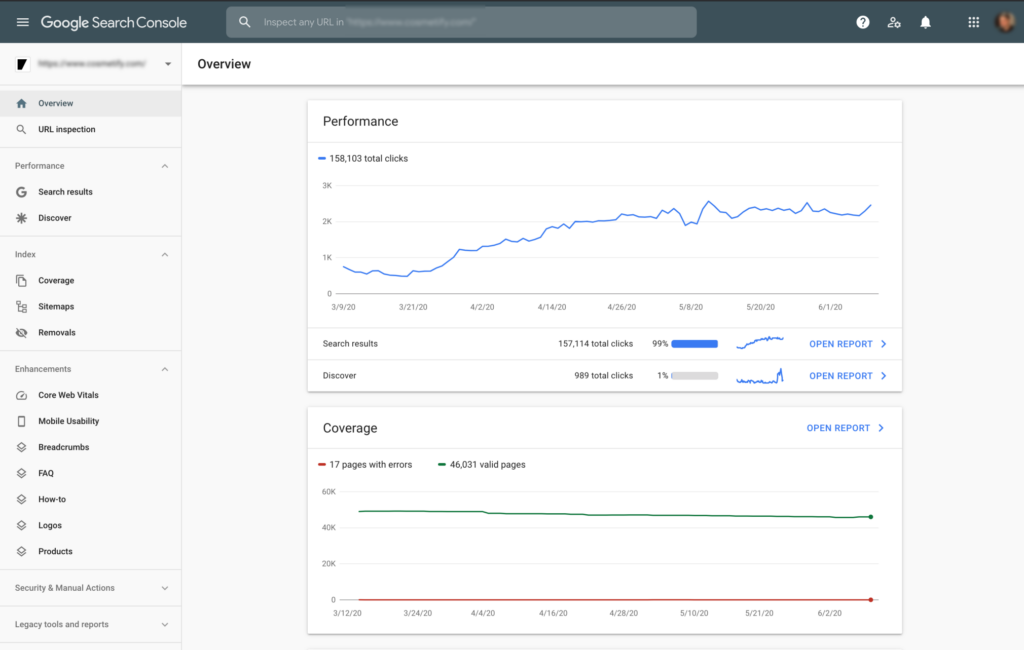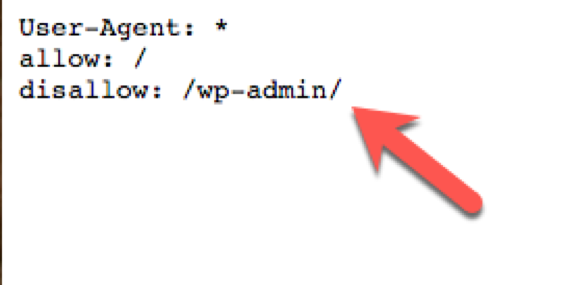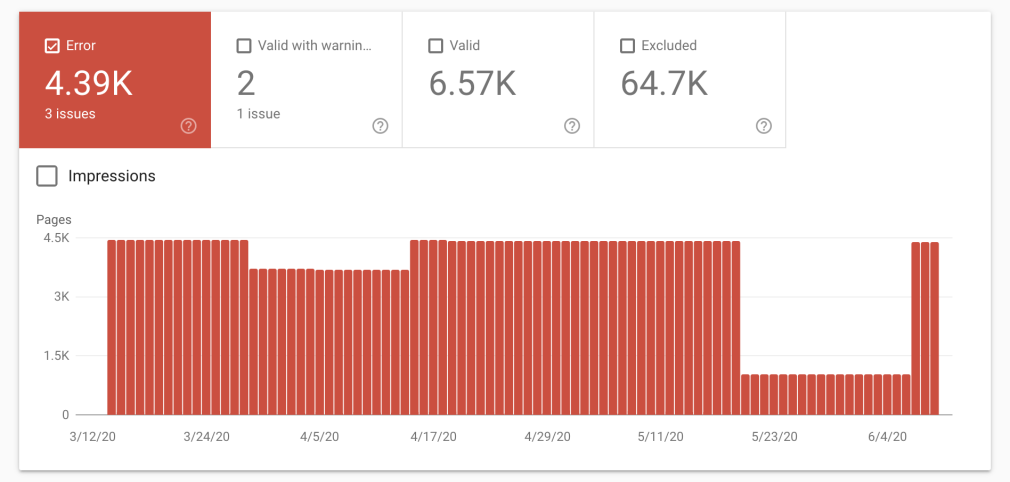In this Article, step-by-step guide to every important SEO action you need to take for 10x Your Traffic from Google.
1. Set Up Google Search Console and Bing Webmaster Tools

Google Search Console is an essential and powerful free platform that allow you to crawl and indexed your website in short time and provides your site’s performance as well as a wealth insights that you can use to planning, submit sitemaps, identify crawl errors and grow your site’s organic visibility and traffic, Much more.
You can learn more about set it up, implementation and more in our tutorial guide.
Bing Webmaster Tools is the similar free tool, just providing data and insights for their search engine.
Check Search Console for Manual Actions includes things like user-generated spam, structured data issues, unnatural links (both to and from your site), thin content, hidden text and even what is referred to as pure spam.

2. Set Up Google Analytics
Without the right data, you can’t make the right decisions.
Google Analytics is a free marketing analytics tool/platform that allows you to measure how users interact with website content, view information and insights regarding the number of individuals are visiting your site, who they are, where they located and how they are engaging with it.
Everything About website in-depth tracks and reports

3. Install and Configure An SEO Plugin (If You Are Using WordPress)
If you are using WordPress you should install and configure an SEO plugin to provide the functionality and features that you need to properly optimize your site.
Our recommendation: Rank math
4. Generate and Submit a Sitemap
In Google’s own words:
A sitemap tells the crawler which files you think are important in your site, and also provides valuable information about these files: for example, for pages, when the page was last updated, how often the page is changed, and any alternate language versions of a page.
Google supports a number of different sitemap formats, but XML is the most commonly used. You will usually find your site’s sitemap at https://www.domain.com/sitemap.xml.
Once you have generated your sitemap from https://www.xml-sitemaps.com/, ensure that this is submitted to Google Search Console and Bing Webmaster Tools.
What Submit Sitemap looks like

5. Create a Robots.txt File
Most commonly, it is used to prevent certain sections of your site from being crawled and is not intended to be used as a way to de-index a webpage and and stop it appearing on Google.
You can find your site’s robots.txt file at https://www.domain.com/robots.txt.

6. Ensure That Google Index Your Website pages
To check Just Type Site::https://www.domain.com/page_url

A Keyword Research Checklist
Without a strong keyword research process, you won’t rank for the right terms, and if you are not positioning for the right terms, your traffic isn’t going to convert.
Here is a keyword research checklist as below:
7. Identify Your Competitors
Before keyword research you know where your competitors stand out, find the terms that are working for your competitors so it’s easy and quick for you do keyword research.
There are many tools available but i recommend traditional free google keyword planner and Find Your Main ‘Money’ Keywords
Find Long-Tail Keyword Variations because lower volume but deliver a higher conversion rate.
Technical SEO Checklist
Technical SEO helps you to create strong foundations and implementation. Here are the most widely recognized areas of best-practice that you want to focus on.
8. Make Sure You Are Using HTTPS
It is 2022, and HTTPS has been known as a ranking factor since 2014.
There is no excuse for not using HTTPS encryption on your site, and if you are still running on HTTP, it is time to migrate
9. Check for Duplicate Versions of Your Site In Google’s Index
It is really important that you are only allowing Google to index one version of your site.
https://www.domain.com
https://domain.com
http://www.domain.com
https://domain.com
These are all different versions of your site and should all point to a single one.
Whether you choose a non-www or www version is up to you, but the most widely recognized one is https://www.domain.com.
10. Find and Fix Crawl Errors
You can identify if there any crawl errors that exist through Google Search Console.
Head to the below screenshot, and you will see both errors and excluded pages, as well as those with warnings and those which are valid.

11. Improve Your Site page Speed
Slow Loading sites impact on ranking factor, Google has recently confirmed an upcoming page experience update for 2021.
There are many powerful platforms available to check some of them as GTMetrix Speed Test, Pingdom, PageSpeed Insights Test (Mobile-only), Byte Check TTFB Test, etc
12. Add Structured Data Markup

On-Page SEO and Content Checklist
Without SEO oriented content and a great on-page experience, you will battle to rank your site and increase your organic traffic. On-Page SEO and Content both are very essential for ranking.
So, Lets proceed.
13. Find and Fix Duplicate, Missing Meta Title
On-Page SEO First significant step is add proper Meta title because it informs search engines what a page is about and should not be duplicate. You also need to make sure that title tags aren’t missing OR blank.
14. Find and Fix Duplicate, Missing Meta Description
Quite simply, it is your Meta description that encourages a user to click on your listing over someone else’s and can either positively or negatively affect your organic CTR.
15. Find and Fix Heading Tags
We need to follow google guidelines about heading tags counting limit for each page.
H1 tag should be add on content’s main heading or page’s main target keyword, and there should only be one in place per page.
H2 tag we can use upto 10 for each page
h3 – h6 tag we can use upto 10 for each page
16. Ensure Images Use ALT Tags
You should focus on image optimization. Ensure that the images on each page of your website use ALT tags to properly describe the content of it.
17. Improve Internal Linking
Internal Linking encourage viewer to be with site more time that impact on you your bounce rate.
Off-Page SEO Checklist
To drive SEO achievement in 2022, , you simply can’t ignore to off-page SEO factors, and while these are often thought of simply as link building, there is something else to it besides that — which I will show below.
18. Analyze Your Competitor’s Link Profile
To outrank our competitor’s on SERP’s you much know insight about competitor’s link profile. There many backlink analytics tool available to analyze your competitor’s link profile and start to know the overall quality and authority of the links that point to their site.
19. Set Up and Optimize Google My Business
Off-page factors go way beyond just links, regardless of these being a key ranking factor.
If you are running a local business, make sure that you are listed (and ranking) on Google My Business; otherwise, you will literally be giving visits to a competitor.
There you go, a 19 steps SEO checklist that both beginners and more advanced SEOs can follow and hopefully find at least a few ways to improve their site’s optimization.
Improve Your SEO Presence Today ?

